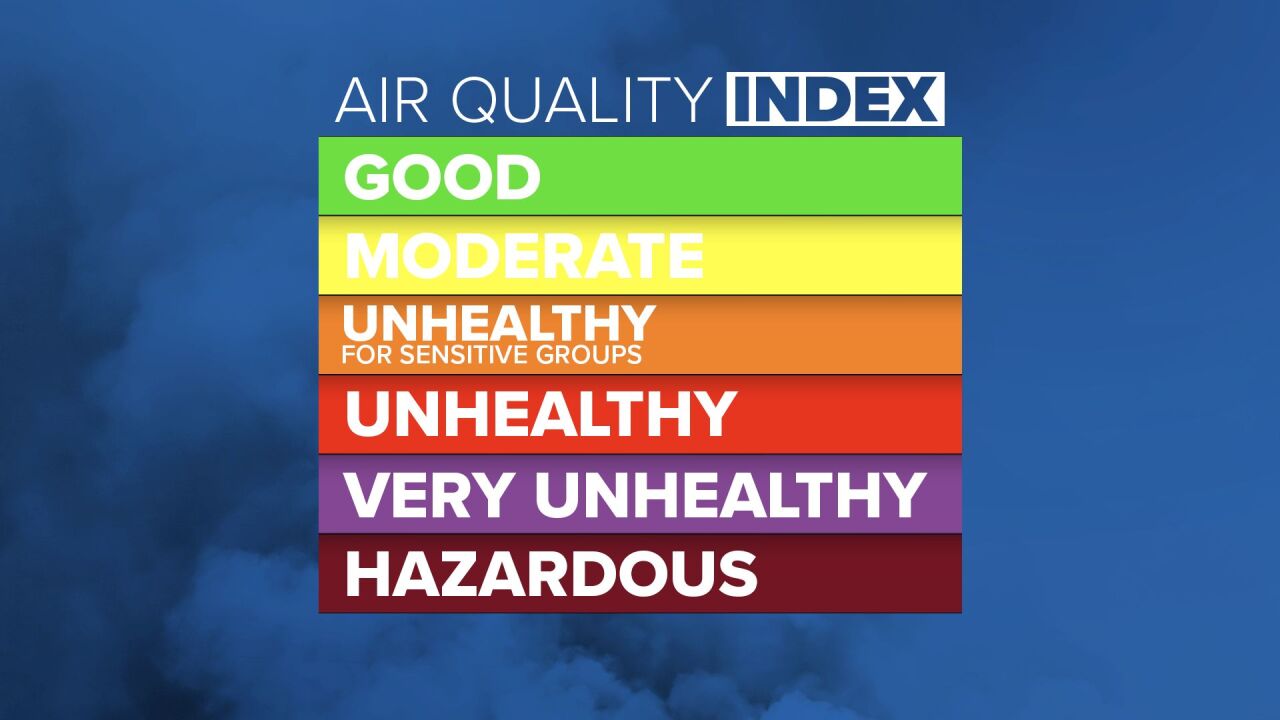With wildfires burning in Idaho, the air quality across some parts of Montana entered the "very unhealthy" category on Monday, including Great Falls.
For the Great Falls Public School district (GFPS), poor air quality means changes in daily activities.
“We do monitor that very closely on the Montana DEQ website; that's our standards, so we have some consistency there. When it is in the unhealthy range, that's when we start making some decisions or the unhealthy for sensitive groups, that's when we start making decisions about whether or not we have kids inside for activities or not,” explained Jackie Mainwaring, director of student achievement for GFPS.
Not only are outdoor activities such as recess moved inside due to poor air quality, but athletics are also impacted.
“We have kids who have respiratory issues that our coaches are aware of, and they work with our training staff at each building to, you know, monitor that. We will practice when it's orange outside; red is definitely when we start considering if we need to go inside for practices, you know, if we're going to be able to conduct a game,” said Mike Henneberg, GFPS athletic director.

The school administrators monitor the air quality throughout the day and will make changes to schedules as needed, whether the air quality improves or worsens.
“It's a very fluid situation; it can change in a matter of hours,” Henneberg added.
Weather can impact several areas of school, which means faculty and staff need to be ready to make changes any given moment.
“We have really great flexible teachers, and their main concern is student safety and the health of our students, that’s part of our strategic plan. If we don't have our kids safe and healthy, we aren't going to get very far academically either,” said Mainwaring.
- Air Quality: 'very unhealthy' in MT
- Montana's stunning Ice Caves
- Child reported missing in Great Falls
- Shane Chadwick Memorial Mural (video)
“Ultimately, our goal is the safety of our athletes, you know, and so that's our primary concern. Air quality and some of the other weather events that we see during the fall, you know, fall into that, so, that's the primary consideration,” added Henneberg.
The Montana Department of Environmental Quality (link) uses color-coded classifications for air quality:
- MAROON: Hazardous - Health warning of emergency conditions: everyone is more likely to be affected.
- PURPLE: Very Unhealthy - health alert - the risk of health effects is increased for everyone.
- RED: Unhealthy - some members of the general public may experience health effects; members of sensitive groups may experience more serious health effects.
- ORANGE: Unhealthy for Sensitive Groups - members of sensitive groups may experience health effects. The general public is less likely to be affected.
- YELLOW: Moderate - air quality is acceptable. However, there may be a risk for some people, particularly those who are unusually sensitive to air pollution.
- GREEN: Good - air quality is satisfactory, and air pollution poses little or no risk.
In addition to the DEQ site, you can also check air quality by clicking here.




